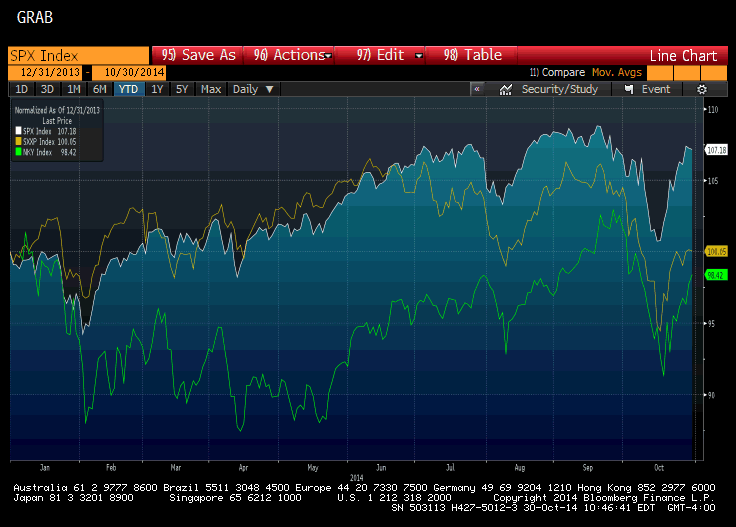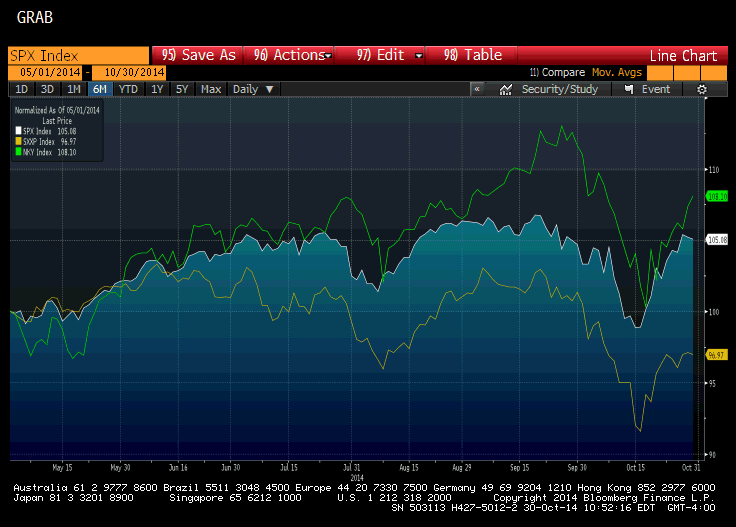This Great Graphic, created on Bloomberg, reflects the performance of three major indices since the start of the year. The white line is the U.S. S&P 500. It has clearly outperformed the Dow Jones Stoxx 600 (yellow line) and the Nikkei (green line).

Specifically, year-to-date the S&P 500 has risen 7.2%, the Nikkei has fallen 3.9% while the Dow Jones Stoxx 600 is essentially flat. As the chart depicts, the S&P 500 recovery off the mid-October lows has been more extensive than the other two indices. 
However, as the chart above reveals that over the past six months, the Nikkei has beaten the S&P 500 quite handily -- 9.5% to 5.2%. The Dow Jones Stoxx 600 has fallen almost 2.9%. Foreign investors took some profits on Japanese shares at the start of the year, but have been net buyers over the past six months, according to the weekly MOF data. The average weekly purchase has been almost JPY44 bln (~$400 mln), which seems too small to explain much of the rise in the Nikkei.
The yen has depreciated 6.2% over the past three months and 3.4% year-to-date. However, the actual inverse correlation between the Nikkei and the yen is low. On a percentage change basis, the rolling correlation over the past sixty sessions is less than 0.1. Conducted at the level of differences, the average correlation over the past sixty days was a little more than 0.1. Still, if one thinks the Nikkei may weaken, there is disappointment with the BoJ (or the slew of tomorrow's economic data), it still seems reasonable to suspect that the dollar may run out of steam after reaching its best level since October 6.
